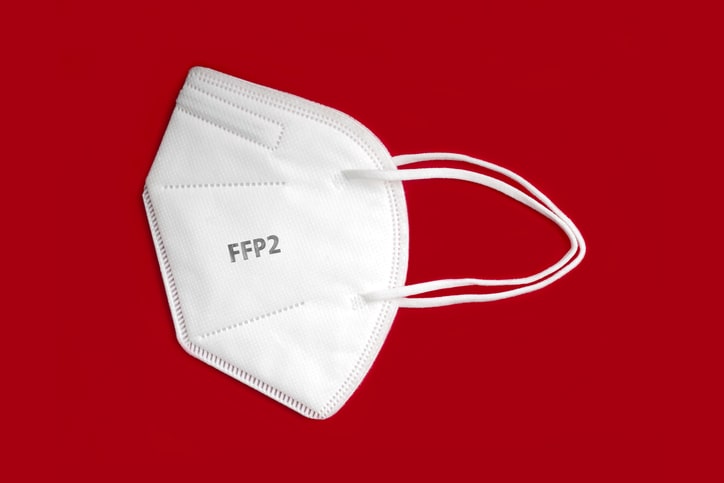
Chronic kidney disease affects an estimated 15% of the US population, and nine of 10 adults with CKD are unaware they have it. Previous studies between 2009 and 2016 have suggested some increase in patient awareness of CKD in adults with CKD stage 4; however, other studies have found low overall CKD awareness across populations that are racially/ethnically and geographically diverse.
Patient awareness is a key component of CKD management and preventive care. Knowledge of CKD diagnosis reinforces adherence to lifestyle changes and treatments for cardiovascular and renal risk factors. It is unknown whether prevention of CKD progression is associated with greater awareness of the presence of CKD.
Chi D. Chu, MD, and colleagues conducted a serial cross-sectional study on behalf of the Centers for Disease Control and Prevention Chronic Kidney Disease Surveillance Team to estimate CKD awareness in a nationally representative population sample according to the risk for progression to kidney failure. The research team also sought to determine whether awareness of CKD has changed over time among patients most at risk for progression to kidney failure. Results of the study were reported in the American Journal of Kidney Diseases [2020;76(2):174-183].
The study utilized data from the National Health and Nutrition Examination Survey (NHANES) from 1999 to 2016. Of the 92,062 NHANES participants during that time period, eligible participants were ≥20 years of age, not pregnant, and had complete data on age, sex, race, serum creatinine level or urinary albumin-creatinine ratio (UACR). Exclusion criteria were not having CKD glomerular filtration rate (GFR) categories 3 or 4 (G3-G4), as defined by estimated GFR (eGFR) ≥15 mL/min/1.73 m2 and <60 mL/min/1.73 m2; patients with eGFR <15 mL/min/1.73 m2 were excluded due to small sample size. Participants who did not answer “yes” or “no” to the question on awareness of CKD were also excluded.
The study predictor was 5-year risk of kidney failure, estimated using the Kidney Failure Risk Equation (KFRE). Predicted risk was categorized as minimal (<2%), low (2% to <5%), intermediate (5% to <15%), or high (≥15%). The outcome of interest was CKD awareness, defined by a “yes” answer to the question “Have you ever been told by a doctor or other health professional that you had weak or failing kidneys?”
Following application of exclusion criteria, the analysis included 3713 survey participants. In the study population, higher KFRE risk was more common among men, persons of nonwhite race/ethnicity, those with diabetes, and those with hypertension. Mean eGFR ranged from 52 mL/min/1.73 m2 in the group with minimal KFRE risk to 26 mL/min/1.73 m2 in the group with highest KFRE risk. Median UACR across the four groups of KFRE risk ranged from 9 to 934 mg/g.
Overall, the proportion of patients with any type of health insurance was high (~96%) and was similar across all groups. In the higher risk groups, Medicaid was more common (14.4% in the highest risk group vs 6.6% in the lowest risk group) and private insurance was less common (48.9% in the highest risk group vs 61.2% in the lowest risk group).
Of participants with CKD G3-G4 and <2% KFRE risk (minimal risk), 7.0% were aware of their CKD (95% confidence interval [CI], 5.9%-8.3%); of those in the low risk group, 18.7% were aware (95% CI, 14.0%-23.4%); of participants in the intermediate risk group, 43.4% were aware (95% CI, 36.4%-50.5%); and of those in the high risk group, 49.6% were aware (95% CI, 41.1%-58.2%).
Consistently over time, crude prevalence of CKD awareness was higher with higher KFRE risk group. In analyses of awareness over time, results of unadjusted analyses showed a borderline statistically significant trend only among those at minimal KFRE risk: 6.3% (95% CI, 4.3%-8.3%) in 1999-2004 and 9.6% (95% CI, 7.4%-11.8%) in 2011-2016; Ptrend=.03). No statistically significant trends were seen in the other KFRE risk groups. CKD awareness estimates were numerically higher in the low KFRE risk group in 2011-2016 than in 1999 to 2004 (22.6%; 95% CI, 14.7%-30.4% vs 14.6%; 95% CI, 6.6%-22.5%, respectively); however, the trend was not statistically significant. In higher KFRE risk groups, awareness ranged from 42% to 50%.
Results were similar in analyses adjusted for sex, age, race/ethnicity, presence of hypertension, and presence of diabetes. There were no statistically significant trends seen in any KFRE risk group.
Multivariable logistic regression was used to examine the association between KFRE risk and CKD awareness. In unadjusted and adjusted models, the odds of CKD awareness were greater with each category of higher KFRE risk. In the two highest risk groups, the odds were similar. All of the associations between CKD awareness and each KFRE risk group were statistically significant (P<.01 for each).
In comparisons of CKD awareness with awareness of diabetes and hypertension, from 1999 to 2016, awareness of diabetes and hypertension were consistently higher in all CKD G3-G4 and in high-risk CKD. Both hypertension and diabetes exhibited an increase in prevalence of disease awareness during that time period (Ptrend<.001 for both).
The researchers noted that the primary limitation to the study was the imperfect sensitivity of the question used in NHANES to ascertain awareness of kidney disease. Other limitations included the small numbers of patients with advanced CKD, basing the diagnosis of CKD on a single measurement of creatinine and albuminuria, and the cross-sectional design.
“In summary we found in a nationally representative sample that approximately half the persons with CKD and high risk for progression to kidney failure (≥15% within 5 years) were unaware of having kidney disease, and among those with minimal (<2%) risk, <10% were aware. The heterogeneity of kidney failure risk also likely contributes to difficulty demonstrating the effects of CKD awareness in the overall CKD population. Future studies of CKD awareness should present risk-stratified results because this may better direct public health efforts,” the researchers said.
Takeaway Points
- Researchers conducted a cross-sectional study to estimate awareness of chronic kidney disease (CKD) in a nationally representative sample stratified according to risk of progression to kidney failure.
- Among persons with the lowest risk estimated with the Kidney Failure Risk Equation (KFRE), unadjusted CKD awareness from 2011 to 2016 was 9.6%, compared with 49.0% among those with highest risk.
- In adjusted analyses, there was no change in CKD awareness over time. In all groups of KFRE risk, awareness of CKD remained below that of hypertension and diabetes; awareness of hypertension and diabetes increased over time.







 © 2025 Mashup Media, LLC, a Formedics Property. All Rights Reserved.
© 2025 Mashup Media, LLC, a Formedics Property. All Rights Reserved.